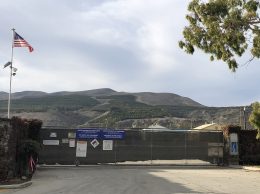Tri-Counties shedding fossil fuels industries
IN THIS ARTICLE
- Editorials Topic
- Henry Dubroff Author
By Henry Dubroff Friday, October 14th, 2016
The Tri-Counties is moving away from its legacy of fossil fuels industries.
The pace of that move and managing the cost of leaving oil and gas operations behind will say a lot about the region’s future prosperity.
The Tri-Counties edged further away from fossil fuels on Oct. 5 when the San Luis Obispo County Planning Commission voted 3-2 to deny Phillips 66’s plan to allow oil from Canada’s tar sands to be shipped via rail to its operations on the Nipomo Mesa.
Phillips 66 is likely to appeal the decision to the SLO County Board of Supervisors, which would appear to be unlikely to reverse both its planning commission’s decision and a staff recommendation against it.
Meanwhile, Gov. Jerry Brown reminded the region of the legacy of the oil heyday when he vetoed a bill from Sen. Hannah-Beth Jackson on cleaning up abandoned oil wells just a few weeks after signing a separate bill on the same subject authored by Assemblymember Das Williams.
Santa Barbara and Ventura counties host 2,200 of the estimated 21,000 wells statewide that have not operated for more than a decade. Funding the capping and cleanup of leaking wells off Summerland flummoxed bureaucrats and environmentalists for the better part of a year.
Whether the Tri-Counties can afford to go cold turkey on oil and gas operations is a question no one seems to want to answer. That’s partly because the oil industry represents some of the biggest taxpayers around and because oil industry jobs are among the last sources of “head of household” positions that the region covets.
Meanwhile, there is still a question about whether it is better, even from an ecological standpoint, to source our fossil fuels locally or import them from a foreign dictatorship or an environmentally costly source such as the tar sands.
Getting oil out or getting fossil fuel free are good ways to grab headlines. There is every reason to want to weigh the safety risks of fossil fuel production against the economic benefits. But the bottom line is that the region’s dependency on fossil fuel jobs and taxes has been exacerbated, not reduced, by the slow growth politics that have prevailed in the region since the mid-1990s.
Praise for EDC-VC
One of the organizations that’s been a bulwark for business in a time of slow-growth is the Economic Development Collaborative of Ventura County.
The EDC-VC has fought the good fight to preserve manufacturing and expand trade-related employment in the region. Its loan pool has put companies such as Saalex
Solutions on the map, it has attracted support from every city in the region’s largest county and its model has been replicated in many communities statewide.
Founded with funding secured after the Northridge earthquake damaged businesses in Fillmore and elsewhere in the county, EDC-VC has sustained a revolving loan pool through good times and bad. It has secured additional loan funding from major financial institutions, taken over the small business development center program for Ventura and Santa Barbara counties and created innovative partnerships to tackle problems like land use and the drought.
Next year, EDC-VC celebrates its 20th anniversary. The Business Times has been proud to support EDC-VC and its program and we congratulate CEO Bruce Stenslie, Small Business Development Center Director Ray Bowman and the entire EDC-VC team.
Related Articles
 Friday, October 14th, 2022
Friday, October 14th, 2022











